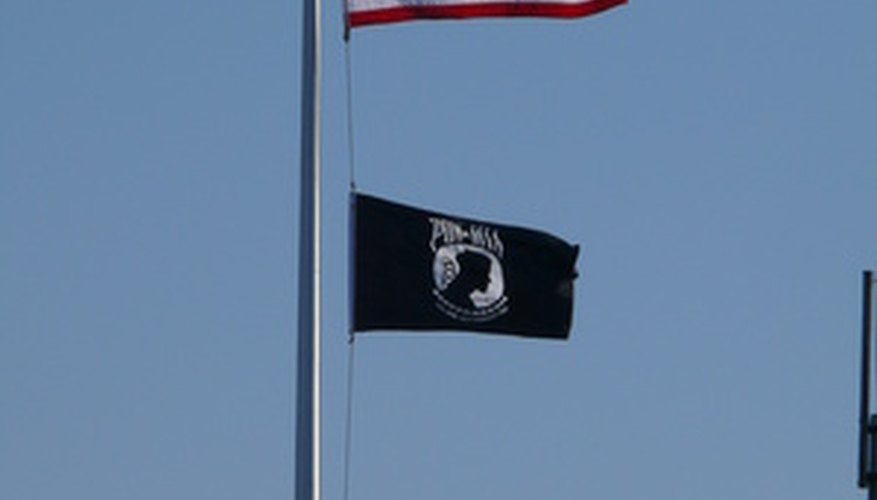Flag pole pulleys have a rope or cable to which flags are attached. The rope or cable wraps around a wheel at the top of the pole, making flag raising and lowering easier.
Fixed Pulleys
Fixed pulley wheels don't move up and down but are fastened to a fixed structure, like the top of a flagpole. The load arm (lift up) and effort arm (pull down) of the cable are equal in length. Pulling down on the effort arm raises the flag clipped to the load arm.
Mechanical Advantage
The mechanical force of a flag pole's pulley equals the ratio between the flag's weight and the physical force required to lift it. The fixed pulley, at the centre, changes the effort force's direction; pulling the cable down a distance of 10 feet on one side causes the flag to lift up 10 feet on the other side.
- Flag pole pulleys have a rope or cable to which flags are attached.
- The fixed pulley, at the centre, changes the effort force's direction; pulling the cable down a distance of 10 feet on one side causes the flag to lift up 10 feet on the other side.
Benefits and Drawbacks
The benefits of the flag pole's pulley include not adding the pulley's weight when raising the flag, and taking advantage of gravity on the flag's weight to assist in lowering it. The disadvantage of the flag pole's single fixed pulley is that raising the flag requires more effort than using movable or combined pulley systems.
